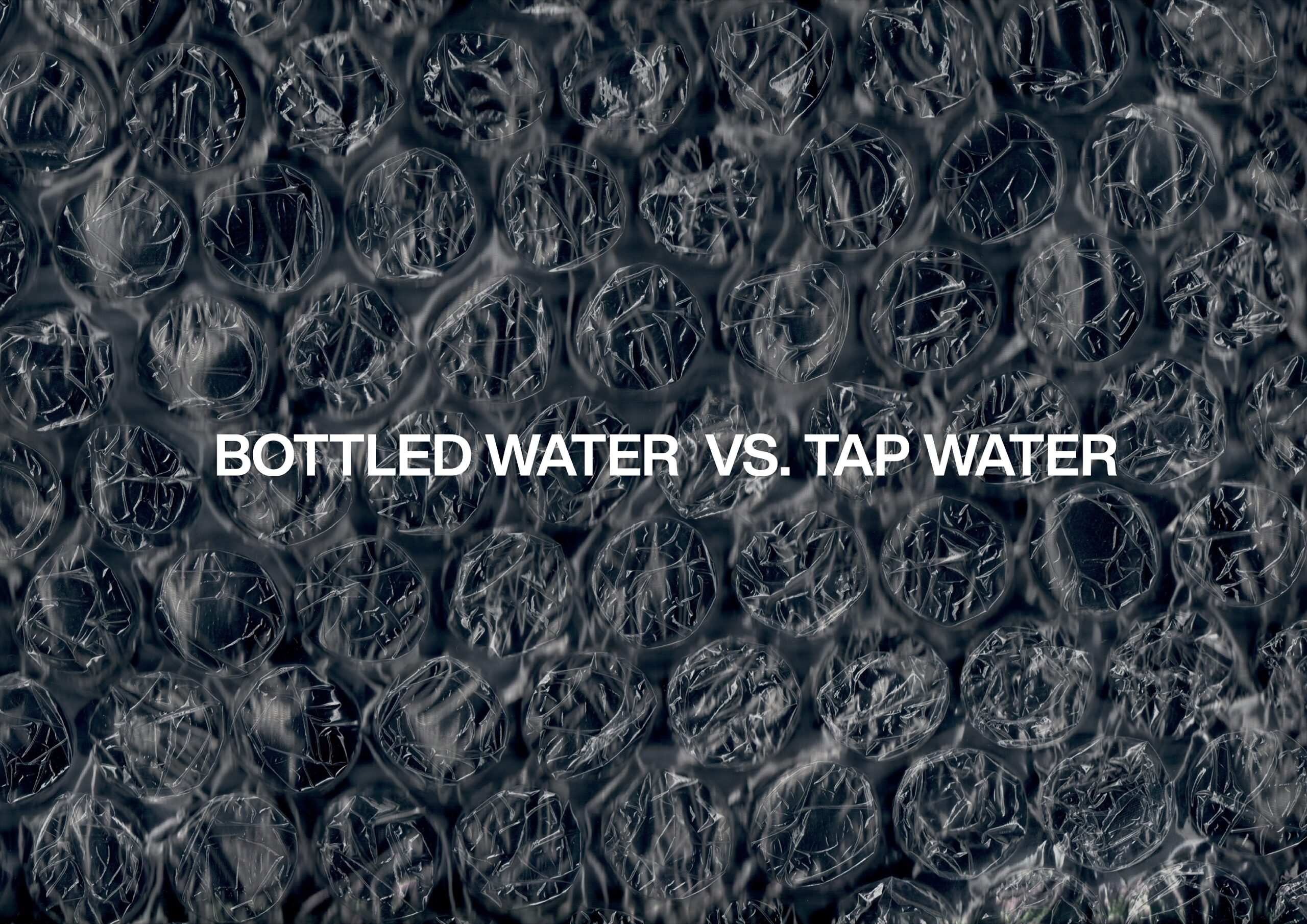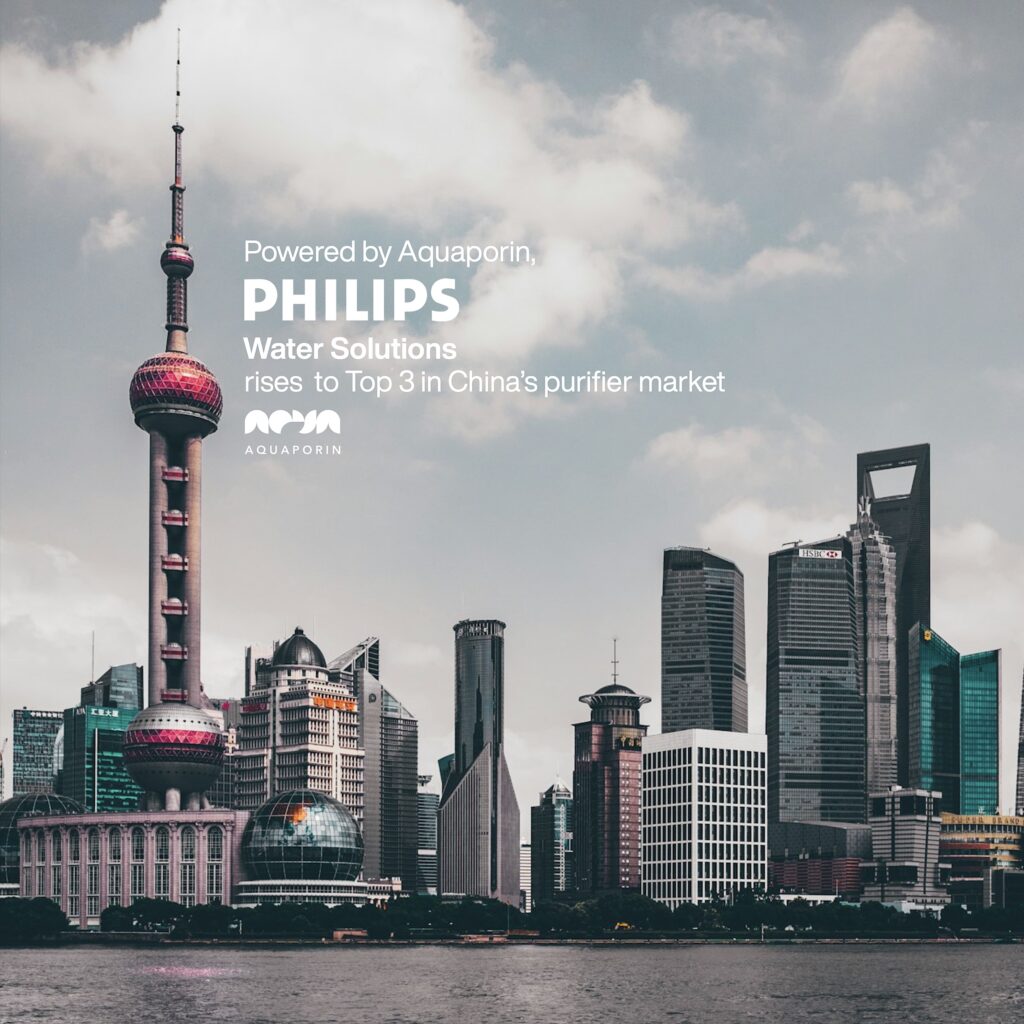Beyond the bottle: The case for tap water

With the growing movement against plastic pollution, we have seen global concerted efforts to decrease the use of plastic consumables. In cafes, restaurants, and bars all over the world, straws in your beverages have taken on a new appearance – silver metal, colorful paper, and beige wheat or rice replacing plastic straws. In other F&B shops, biodegradable packaging has been adopted or is being eagerly piloted. It is clear that we are all thinking a little bit more about our use of single-use and disposable plastics.
Consuming bottled water harms the environment
About 1.3 billion plastic bottles are being consumed globally each day. This is about 1 million bottles per minute. To enjoy this amenity, top-spender countries paid 386 to 1348 USD/person in 2021. Meanwhile, the environmental impact of the plastic bottle industry is astounding. Multiple studies have calculated that bottled water’s carbon footprint is 300 to 1000 times higher than local tap water, depending on the country and distance traveled.
The environmental impact comes from the fact that bottled water has been obtained from a separate source, transported from the source to a facility, treated, packaged into plastic bottles, packaged into cartons or trays, wrapped with more plastic, and then shipped across the country or the world before reaching consumers. In each stage of their journey, fuel and power are consumed, and carbon dioxide is emitted into the atmosphere. The production of plastic bottles also requires a high amount of resources, needing about 5.3 liters of water to produce a 1 liter PET bottle.
Bottled water has a high economic cost and an even higher environmental cost. Read more about the link between plastic-bottled water and plastic pollution here.
On the other hand, tap water is water obtained from a local source, treated in a central facility, and then sent right into homes through the pipes and out of the tap, no packaging or trucking necessary.
So, why are we so taken with bottled water?
- Many people have the perception that bottled water is cleaner and therefore safer to drink.
- When on the go, grabbing a bottled water from the nearest store can be an effortless way to hydrate.
- Each of the many types of bottled drinking water proclaims to enrich the consumer’s health in its own way – from aiding digestion to promoting heart health, and even reducing the risk of cancer.
- Some bottled waters have become a mark of class and fashion, claiming to deliver a superior drinking experience.
These are some reasons for the continued demand for bottled drinking water. However, we vote for the case of tap water and believe there is much more room for appreciating local tap water.
3 reasons to support your local tap water
1. In many countries, tap water is monitored and regulated
In many countries, the safety and quality of tap water are as tightly regulated as bottled water. The US Environmental Protection Agency’s (EPA) National Primary Drinking Water Regulations (NPDWR), and the EU Drinking Water Directive (DWD) are two of the most well-known regulations for potable tap water.
Many jurisdictions mandate regular monitoring as part of their drinking water regulations, including regular sampling, analyses, and review of quality reports.
2. Tap water is cheaper than bottled water
Tap water is highly economical. The cost of tap water varies from 1.15 USD to 10.05 USD per cubic meter across Europe, the US, and Singapore. 1 cubic meter is equivalent to between 660 to 1660 bottles of water depending on size. Meanwhile, the cost of bottled water varies from 1.09 to 2.85 USD or even more per single bottle.
Just a single instance of opting for bringing along a bottle of tap water may cost 1000 times less than grabbing a bottled water on the go from the supermarket.
3. A balanced diet is the main source of minerals
Some choose bottled water because they believe that the minerals it contains can have a positive impact on their health. However, the amount of specific minerals in bottled water varies from brand to brand, and from country to country. It is difficult to guarantee exactly how much minerals you are taking in from your water. Having a healthy and balanced diet is much more crucial for good mineral intake compared to your choice of drinking water. Read more about drinking water and health here.
Think globally, drink locally
Do not write off tap water, especially if you reside in a country with strictly regulated, high-quality tap water. It can be an excellent and highly economical source of drinking water.
To take matters into your own hands, firstly, stay informed of the quality of your local tap water. Your local news outlets and health and environment ministries will have the related publications.
And secondly, consider adding an extra layer of protection to your home, right at your tap, so you can have total peace of mind. Purifiers like Aquaporin’s A2O Pure effectively filter out harmful contaminants like bacteria, trace metals, and chemical contaminants. This simultaneously improves the taste of the water by reducing the unpleasant taste and odor that would have resulted from the trace contaminants.
If the quality of your local tap water is controlled less stringently, then purifying it at home is even more important. Get more tips to reduce your bottled water consumption here.
Choose your local tap water over bottled water – for the sake of the planet and your wallet.





